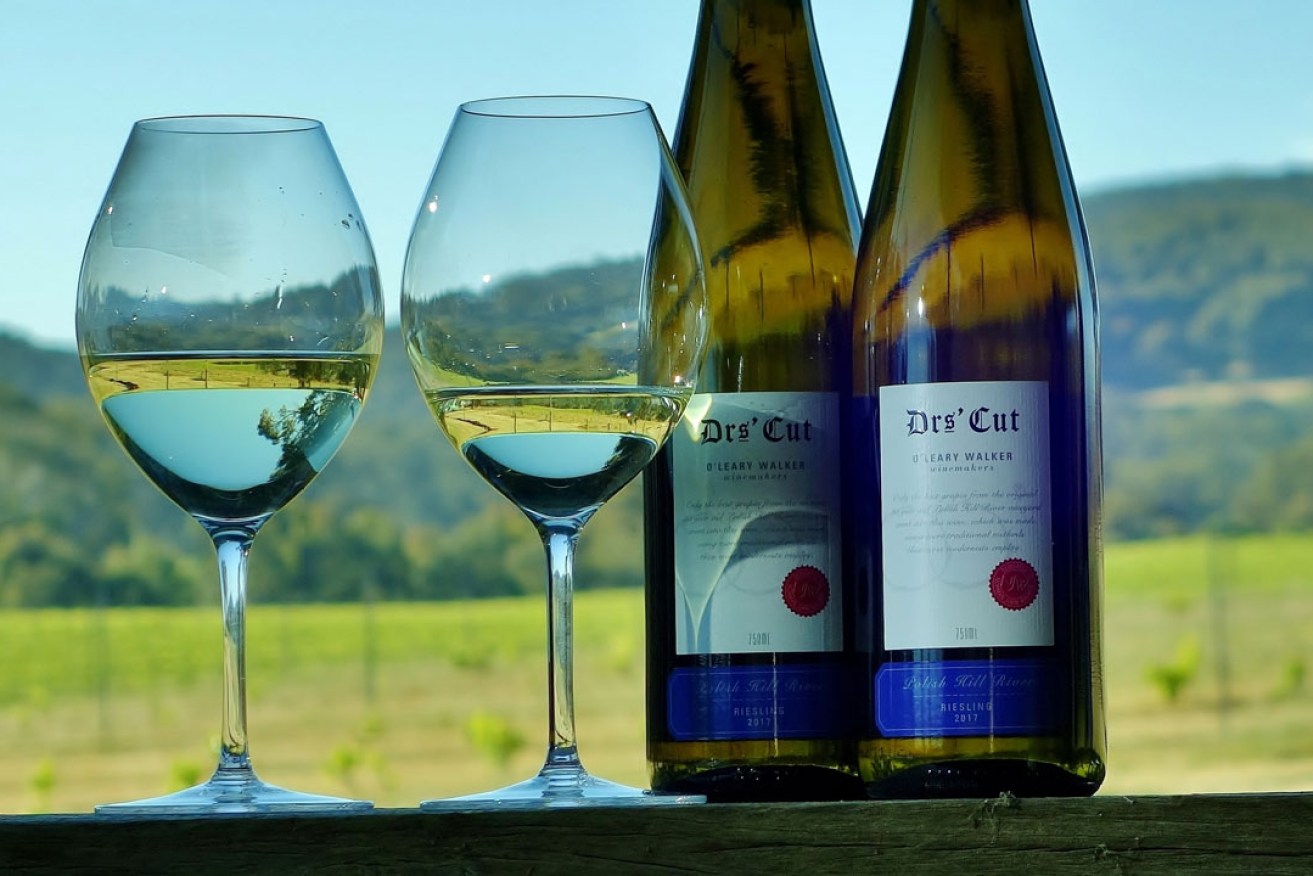Is this Clare’s best Riesling?
Whitey has found a new favourite Riesling, which he thinks will be a winner with hardcore fans of Burgundy.


It must have been a very complex sociological mess in the North Mount Lofty Ranges through the early years of white colonisation.
Think of the Clare hills. While the Ngadjuri people were ravaged by the disease the newcomers brought, you had Austrian Jesuits building their church retreat, school, and pub at Sevenhill, Mexican muleteers carting Burra copper south, from one wine shanty to another, Irish farmworkers clearing country for forage and stock, posh British landowners building themselves grand homestead estates, and then an influx of Polish settlers who made their home at the head of the Hill River.
The British government’s Letters Patent attachment to its Act establishing its new privateers’ colony officially rendered the original owners to suddenly be British subjects. It stated, however, that this country was the property of these ancient civilisations and ruled in their protection, declaring that the whites should do nothing to “affect the rights of any Aboriginal natives of the said province to the actual occupation and enjoyment in their own persons or in the persons of their descendants of any land therein now actually occupied or enjoyed by such natives”.
The occupiers ignored this; the Ngadjuri who survived the booze and disease and relentless clearances ended up virtually derelict around Riverton and Willochra.
Once Jeffrey Grosset set up his little winery at Auburn, he began purchasing fruit from a 1970 planting of Riesling near the little Roman Catholic chapel the Polish settlers had built on a hillock at the source of the Hill River. This place was colloquially known as Polish Valley. Grosset called his wine Polish Hill Riesling. It was an instant hit.
This is more an occasional stream than a river, flowing after good rain from the hills near Mintaro, to disperse on what must have been rich peppermint gum forest on the flats to the north and east. This flat alluvial ground has gradually gone saline since clearance, but at the stream’s source on the ancient geologies of the hills very fine wine grapes can be grown.
For some years, the fruit of this old vineyard, managed organically on sandstone and slate, and owned by a couple of visionary heart surgeons, has gone instead to O’Leary Walker Winemakers at Watervale. It goes into their outstanding Polish Hill River Riesling.
In exceptional years (like two of them – 2013 and now 2017) its best selection makes Drs’ Cut, made vaguely after the Alsace style with wild yeast, slow ferment and six months on lees.
O’Leary Walker Winemakers Drs’ Cut Polish Hill River Riesling 2017 ($40; 12.5% alcohol; screw cap) is possibly the best Clare Riesling I’ve encountered. It replaces the ’13, which was perhaps the previous best, but that’s finally sold out, dammit.
The wine is immediately smooth, harmonised, rich and highly complex. All manner of florals and fruits, tropical and citrus ooze around the glass with wisps of honey and lime marmalade. It is a bigger, more luxurious bouquet than most Chablisienne Chardonnay, but never seems awkward or corpulent.
I don’t mean to corral it unfairly – it’ll saunter off wherever and whenever it likes, anyway – but that bouquet alone has me suggesting it’s a Riesling for hardcore Burgundy fetishists. Think of a rocking firm acid Meursault without overt oak.
The form of the palate, its weight and texture, is more refined, tight and poised than that bouquet teases you to expect. It’s rich and rewarding without being cloying or syrupy. It’s utterly calm, polished and silky, with the tiniest dusting of tannin embracing the acids in its languorous taper. Its flavours have barely stirred yet – while they’re complex, full and polished, they’ve hardly started.
While I enjoy the edgy steel and acrid cordite and slate of the 2013, this has all that, but it’s more fleshy, more heady, more idyllic wine. It will accompany the oilier bottom-feeding fish – scallops, crustaceans, flathead – brilliantly, offering more harmony than the crunchy ’13’s contrast.
I can’t wait till I find the right lightly-smoked wurst to make a proper choucroute, the Alsace version of sauerkraut. Spicy roast spuds, a stack of wine-cooked pickled cabbage, those snags, a touch of crunchy smoked bacon and a big whack of creamy mustard stirred with cognac … a bottle of Drs’ Cut swelling in the decanter … cut my mustard, baby … grrrrr!
So, typically, we have a truly great and rare wine whose complexity and grandeur can’t help but invoke in me contemplations of all those collisions of human history and the lands where they were committed. It makes the whole marvel more profound and unlikely.




